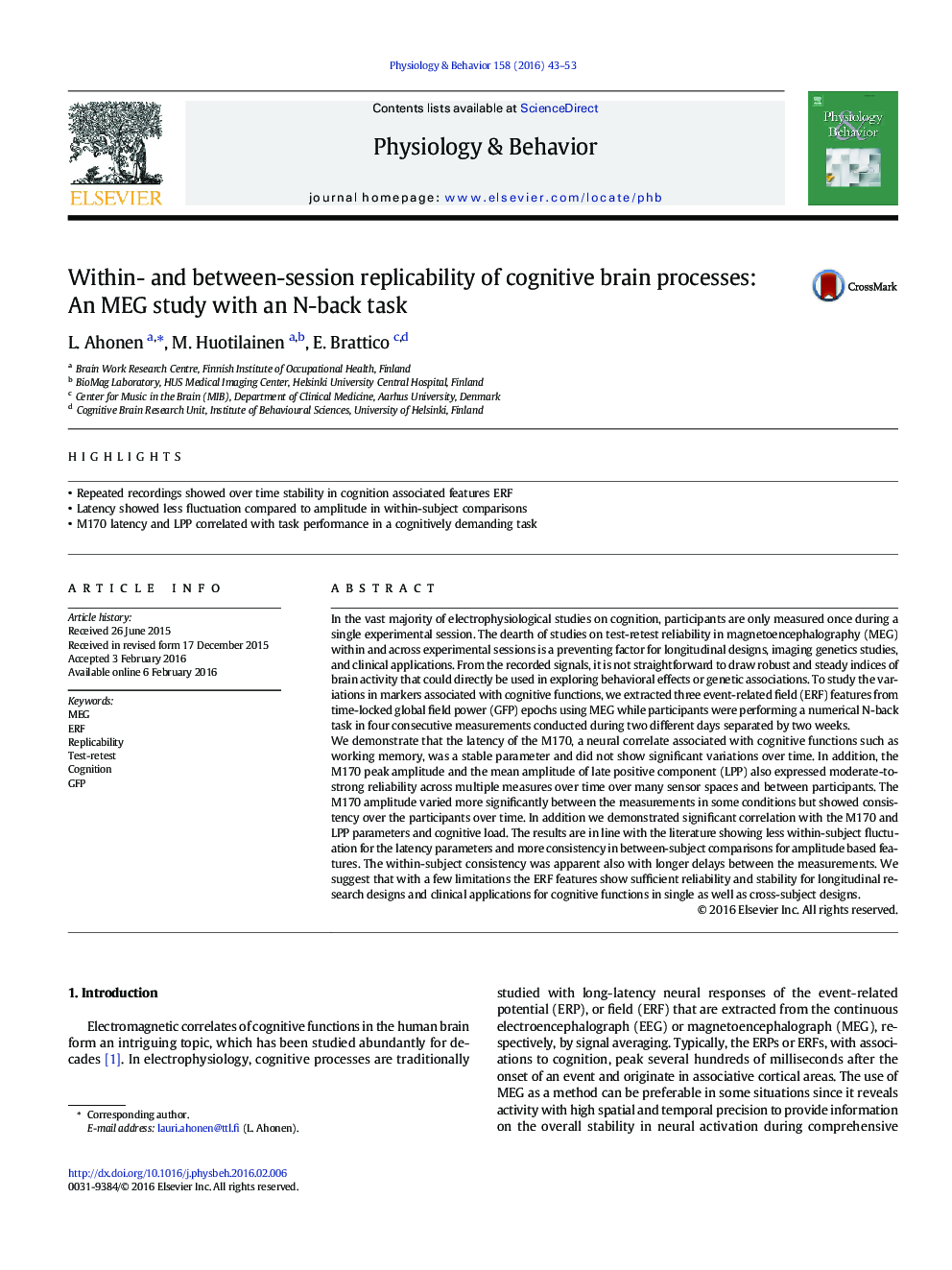| Article ID | Journal | Published Year | Pages | File Type |
|---|---|---|---|---|
| 2844049 | Physiology & Behavior | 2016 | 11 Pages |
•Repeated recordings showed over time stability in cognition associated features ERF•Latency showed less fluctuation compared to amplitude in within-subject comparisons•M170 latency and LPP correlated with task performance in a cognitively demanding task
In the vast majority of electrophysiological studies on cognition, participants are only measured once during a single experimental session. The dearth of studies on test-retest reliability in magnetoencephalography (MEG) within and across experimental sessions is a preventing factor for longitudinal designs, imaging genetics studies, and clinical applications. From the recorded signals, it is not straightforward to draw robust and steady indices of brain activity that could directly be used in exploring behavioral effects or genetic associations. To study the variations in markers associated with cognitive functions, we extracted three event-related field (ERF) features from time-locked global field power (GFP) epochs using MEG while participants were performing a numerical N-back task in four consecutive measurements conducted during two different days separated by two weeks.We demonstrate that the latency of the M170, a neural correlate associated with cognitive functions such as working memory, was a stable parameter and did not show significant variations over time. In addition, the M170 peak amplitude and the mean amplitude of late positive component (LPP) also expressed moderate-to-strong reliability across multiple measures over time over many sensor spaces and between participants. The M170 amplitude varied more significantly between the measurements in some conditions but showed consistency over the participants over time. In addition we demonstrated significant correlation with the M170 and LPP parameters and cognitive load. The results are in line with the literature showing less within-subject fluctuation for the latency parameters and more consistency in between-subject comparisons for amplitude based features. The within-subject consistency was apparent also with longer delays between the measurements. We suggest that with a few limitations the ERF features show sufficient reliability and stability for longitudinal research designs and clinical applications for cognitive functions in single as well as cross-subject designs.
